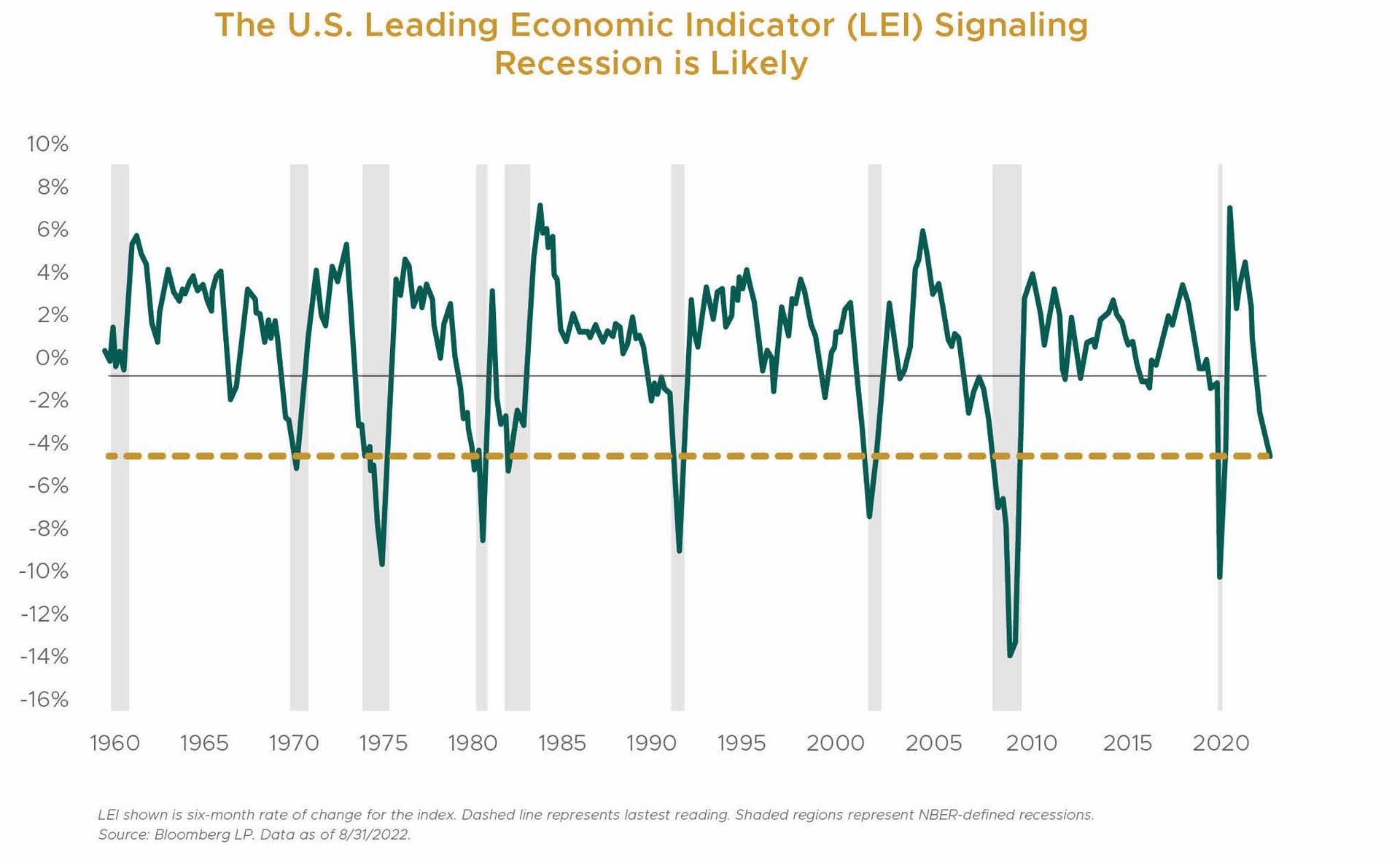FOURTH QUARTER 2022 INVESTMENT COMMENTARY
MARKET RECAP
An extremely difficult year in the financial markets ended on a down note for U.S. stocks. After a 14% rally in October and November, the S&P 500 Index dropped 5.8% in December to close out the year with an 18.1% loss, its largest annual decline since 2008.
Foreign stock markets held up much better in the fourth quarter. Developed international stocks (MSCI EAFE Index) gained 17.3% — one of their best quarters ever — and Emerging Market stocks (MSCI EM Index) were up 9.7 %. For the full year, developed international stocks were down 14.5% in dollar terms (almost four percentage points better than the S&P 500), while EM stocks were down a bit more than the S&P 500 with a 20.1% drop. These annual returns were despite the U.S. dollar (DXY Index) appreciating, 8.3% for the year, which reduces dollar-based, foreign equity returns one-for-one. In the fourth quarter, however, the dollar dropped 7.7%, providing a tailwind to EM and international equity returns for U.S. investors.
Turning to the fixed-income markets, core investment-grade bonds (Bloomberg U.S. Aggregate Bond Index, aka the “Agg”) had a solid fourth quarter, gaining 1.9%. But this was still the worst year for core bonds in at least 95 years, with the Agg dropping 13.0%. The key driver, of course, was the sharp rise in bond yields; the 10-year Treasury yield ended the year at 3.9%, up from just 1.5% a year prior. High-yield bonds (ICE BofA Merrill Lynch U.S. High Yield Index) had a strong fourth quarter, up 4.0%, but were down 11.2% for the year. Floating rate loans (Morningstar LSTA Leveraged Loan index) were the best segment within the bond markets, down less than 1% for the year. Municipal Bonds were down 8% (Morningstar National Muni Bond Category).
Flexible/nontraditional bond funds (Morningstar Nontraditional Bond category) declined 6.3%, roughly half as much as core bonds.

INVESTMENT OUTLOOK AND PORTFOLIO POSITIONING
Inflation and monetary policy remain the financial markets’ key macro focus. U.S. headline inflation data have improved, suggesting we have seen the peak in inflation for this cycle. Various measures of core inflation (i.e., excluding food and energy) have flattened, but remain at 5% or 6%, far above the Federal Reserve’s 2% target. The Fed’s message has been clear that it intends to maintain restrictive (tight) monetary policy throughout 2023. Indeed, at its December 14 meeting, the Fed raised the fed funds rate by 0.5% to a target range of 4.25% to 4.50%. It also forecasted 75bps of additional rate hikes in 2023.

Inflation is not just a U.S. problem. Nearly all the other major global central banks (except Japan and China) are also continuing to hike interest rates in their countries. For example, both the European Central Bank (ECB) and the Bank of England hiked their policy rates another 0.5% in December. These synchronized global rate hikes will further depress global aggregate demand and economic growth over the shorter term. It’s also typically a headwind for stocks.
On the economic growth front, key leading indicators deteriorated further in the fourth quarter. The Leading Economic Indicator (below), which has a long track record of “calling” recessions, has fallen for nine consecutive months (and likely will again in December). This has never happened without an ensuing recession.
While we weigh the evidence as leaning strongly towards recession, there are some positives supporting the economy that should mitigate the severity of a U.S. recession if and when it happens. First and foremost, the labor market remains strong, enabling consumer income and spending growth; monthly job growth (nonfarm payrolls) has also remained solid, increasing by 263,000 in November; weekly new unemployment claims (a leading indicator for the labor market) remain low, though they are ticking higher.
Households also still have huge “excess savings” stemming from the pandemic — about $1.5 trillion (down from $2.3 trillion) that can support additional spending even as the Fed tightens.

Business balance sheets are also generally in good shape, with many firms having refinanced their debt at low rates prior to this year’s sharp rise. More broadly, there does not appear to be any major, systemic, economic/financial icebergs lurking under the surface, e.g., unlike in 2007-08 with the housing/mortgage derivatives market.
To the above list of macro positives, we would add a significant new development in the fourth quarter: the unexpected and sudden abandonment of China’s highly restrictive zero-COVID policy. Zero-COVID has been the key driver of China’s economic slump the past two years. But now the most repressive measures — mandatory testing, quarantines, community lockdowns and travel restrictions — are being revoked. The reopening of China’s economy for domestic consumers should be a catalyst for a growth rebound in 2023.
The bottom line is that a U.S. recession next year is not a certainty. But based on the evidence, we think it is likely. On the positive side, it should be significantly milder than the 2007-08 and 2000-01 recessions.
CLOSING THOUGHTS
As 2022 has reminded investors, we should “expect the unexpected, and expect to be surprised.” This is expressed in our portfolio construction and investment management via balanced risk exposures, diversification and forward-looking analysis that considers a wide range of potential scenarios and outcomes.
We believe 2023 will likely present us with some excellent long-term investment opportunities. Unfortunately, we also expect a recession and the potential for stock market volatility.
While challenging, it is critical for long-term investors to stay the course through these rough periods. The shorter-term discomfort is the price one pays to earn long-term growth–it is this long term growth that most investors need to build meaningful wealth and achieve their financial objectives.
Outside of the U.S. stock market, we already see attractive medium-term expected returns from international and emerging markets stocks. (With a recession they will likely get more attractive.) A declining dollar, as we expect medium-term, would further fuel non-U.S. equity returns.
Fixed-income assets and high-quality bonds are also now reasonably priced with mid-single digit or better expected returns. Core bonds will also provide valuable portfolio ballast in the event of a 2023 recession.
As always, we appreciate your continued trust and look forward to serving you in 2023.
-The Owen Legacy Group

Note: For discretionary use by investment professionals. This document is provided by iM Global Partner Fund Management, LLC (“iMGPFM”) for informational purposes only and no statement is to be construed as a solicitation or offer to buy or sell a security, or the rendering of personalized investment advice. There is no agreement or understanding that iMGPFM will provide individual advice to any investor or advisory client in receipt of this document. Certain information constitutes “forward-looking statements” and due to various risks and uncertainties actual events or results may differ from those projected. Some information contained in this report may be derived from sources that we believe to be reliable; however, we do not guarantee the accuracy or timeliness of such information. Investing involves risk, including the potential loss of principal. Any reference to a market index is included for illustrative purposes only, as an index is not a security in which an investment can be made. Indexes are unmanaged vehicles that do not account for the deduction of fees and expenses generally associated with investable products. A list of all recommendations made by iMGPFM within the immediately preceding one year is available upon request at no charge. For additional information about iMGPFM, please consult the Firm’s Form ADV disclosure documents, the most recent versions of which are available on the SEC’s Investment Adviser Public Disclosure website (adviserinfo.sec.gov) and may otherwise be made available upon written request.